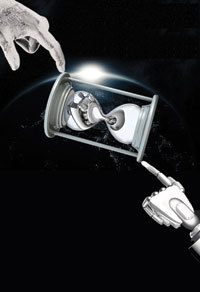

|
Edward Lowton
Editor |


|
Bearing life twice as long with increased load ratings
08 December 2014
Technical advances at Koyo have increased bearing life and increased load rating, bringing advantages of increased up-time, less maintenance, smaller package space, and reductions in weight.

Koyo reports that decades of research and development has led to an increase in the actual life of all of its bearings. Having been carrying out extensive testing since the 1990s Koyo has found that its bearings typically lasted twice as long as the calculated life under the JIS/ISO standard. The company says these achievements have been reached through technological advances in its steel specifications and manufacturing processes.
The company says that JIS B 1518:2013 has been revised and a bearing life calculation that uses the aISO factor has been introduced. This enables Koyo to calculate bearing life that takes into consideration the lubrication conditions and the loading conditions of the bearing, and it improves the accuracy of the service life calculation.
Koyo has been testing its bearings since 1992, so had a wealth of data to compare. The increase in actual life compared with calculated life is because of advances in the steel making process and reductions in the amount of oxygen in steel that is harmful to bearing life. At the same time, Koyo has implemented daily component control that is advantageous to bearing life. As a result, it has been able to confirm twice the bearing life in thrust style rolling contact fatigue tests.
Koyo argues that if its steel is better than the JIS/ISO standard upon which lifetime calculations are made, then it can improve the figure used for the dynamic load rating. Certainly the cleanliness control is tighter than the accepted standard, delivering better bearing life. Double the life is equivalent to multiplying the dynamic load rating based on JIS by 1.25, so Koyo has improved the accuracy of the life calculation by multiplying the dynamic load rating by 1.25 on both ball bearings and roller bearings.
- No related articles listed
- No related articles listed

















